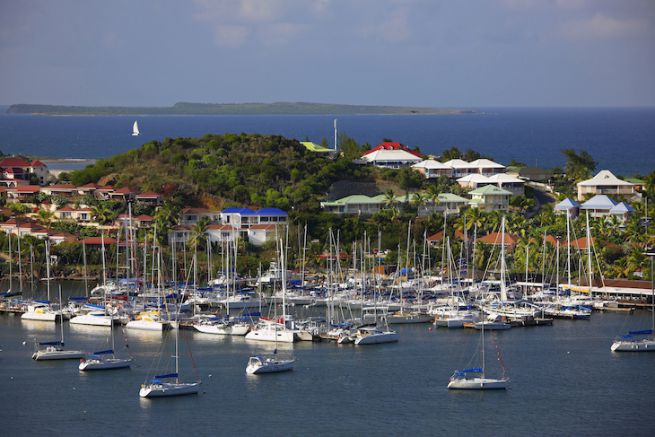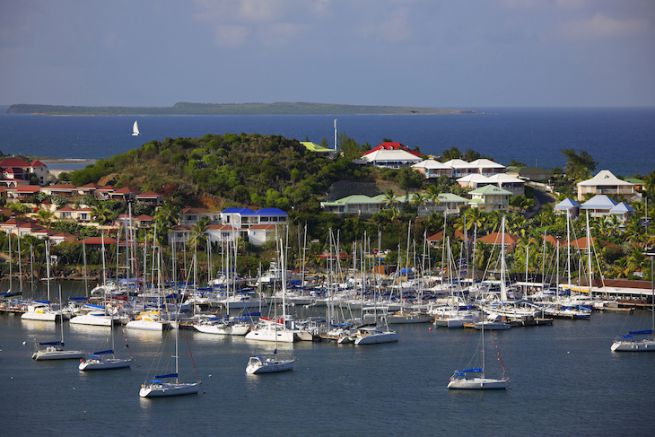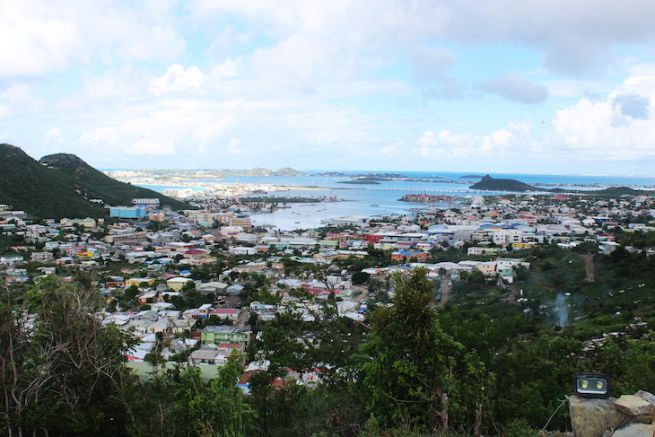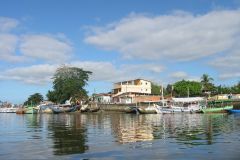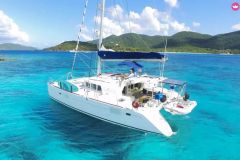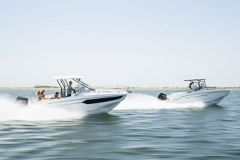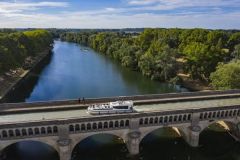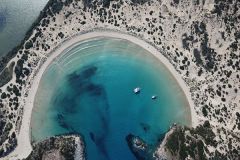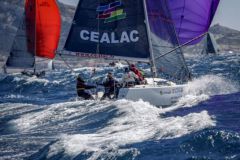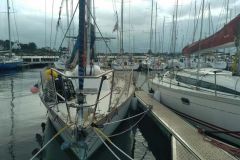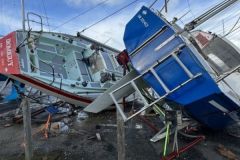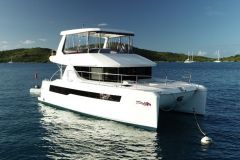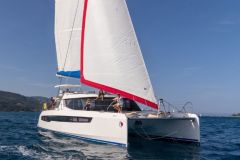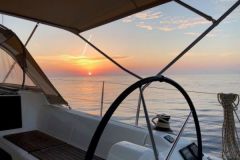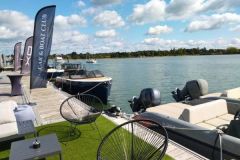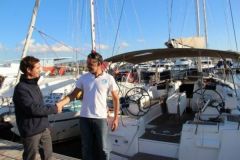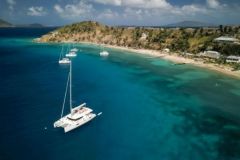A weather phenomenon never seen before
A year ago, hurricane IRMA devastated the Lesser Antilles, particularly Saint Martin and Saint Barthélemy. Winds of more than 300 km/h crossed the islands, destroying everything in their path. In Saint-Martin - which has been hit hardest - 85% of the houses have been destroyed or damaged and the entire fleet of boats on the island has been affected.
"We only learned of IRMA's classification three days before it came through. A week earlier, the National Hurricane Center announced the preparation of a phenomenon never seen before north of Ecuador." explains Bulent Gulay, President of Métimer, the association of sea professionals in Saint-Martin.
Indeed, IRMA is the most powerful hurricane recorded in the North Atlantic, ranked in category 5 - the highest on the Saffir-Simpson scale. Although the island of Saint-Martin is used to hurricanes, it is not prepared to face IRMA. " We know we are in a cyclone zone, but the inhabitants do not think about having their structure checked." bulent explains.
In any case, it would have been impossible to control such a powerful meteorological phenomenon:" Unfortunately, there are no miracle solutions... We know how to manage hurricanes up to force 2/3, even a small 4, but then it's impossible to do anything" bulent replied.
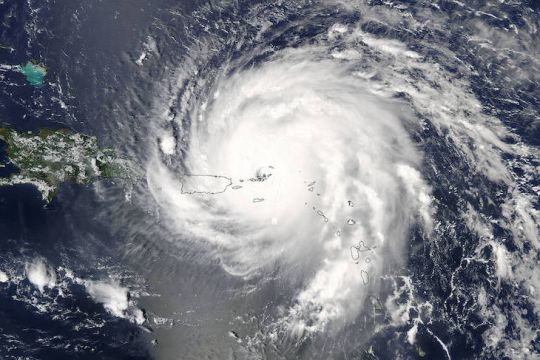
On-shore preparations
Ashore, the population prepared with the means on board to face the island's biggest storm. The houses have been barricaded and the inhabitants have taken refuge in the bathrooms - "the most secure rooms, because often there are no windows" explains Bulent.
Others preferred to leave the island. Military planes and boats have been chartered to take the children away.
Still others decided to go to sea with their boats, heading south, to Venezuela or the Grenadines and returned afterwards. "We don't know exactly how many people, because there is no control when you leave a port. We think there are about 15 people at 16?000 who have fled. And a year later, there are about 9,000 to 9,500 people who have not returned." supports Bulent.
There are no images of the cyclone since the city's cameras were all destroyed by IRMA. Then followed José and Maria a few days later, who spared the Lesser Antilles of the North, already well affected by IRMA.
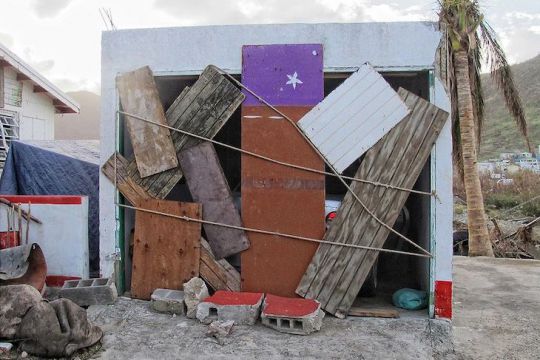
Preparations at sea
Saint-Martin is a small paradise for cruising and there are many charter bases there. Before IRMA, the island was home to a base of 175 charter boats, divided between various charter companies, including Sunsail/The Moorings, based in Oyster Pond before the hurricane.
"Before the cyclone arrives on the island, we can't know how it will turn out. We're based on the old hurricanes that passed, but IRMA was out of the category." bullent explains.
And indeed, despite all the necessary preparation, this was not enough to "save" Sint Maarten's fleet. "Insurance advice is applied to mooring lines, but their recommendations are often impossible to implement... Try sliding fenders under a catamaran..." adds Bullent.
So everyone did the best they could to protect the boats. The boats were moved away from the wharf, with 3 mooring lines at the front and 3 at the back. At sea, they were moored on several buoys. The sails have been removed, the booms and halyards attached. "We didn't leave anything outside. Even the largest appendages were removed from their davits and tied to the front of the boats."
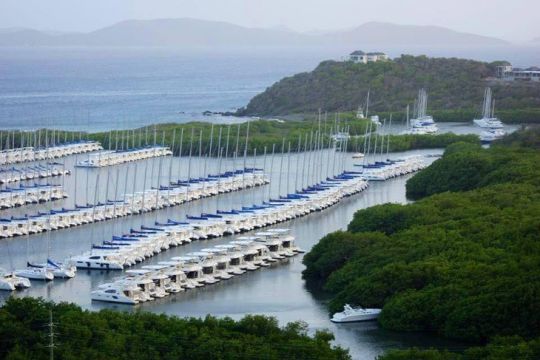
For 2 to 3 days, the island prepared to face IRMA, each entity managing its boats. Some, more used to these protocols than others - such as the Yacht Club of Saint-Martin or the Sunsail/The Moorings rental base - have prepared their boats accordingly. Boaters and boat owners who have left the island have preferred to leave their boats in shipyards.
"In the islands, there is a real preparation for the cyclone period. Boaters are aware of this possibility and charters stop" explains Bulent.
But despite the preparations, a large part of the catamarans have been returned. The cleats on the pontoons and docks were blown off. Because if the hurricane generates strong winds, it also generates a rise in water levels - which has caused a flushing effect, particularly at Anse Marcel, a comfortable marina nestled in a dead end in the north of the island - but also its share of tornadoes.
What is the outcome on tirer??
For 6 hours, IRMA destroyed almost everything in its path, both on land and at sea. "All the effects of the hurricane occurred in 12 hours, but in the end, it only took 6 hours. It started around 2:00 in the morning with the biggest effect around 6:00. By 8:00 a. m., the calm had returned." explains Bullent.
Before concluding: "With IRMA, we learned that we were very small. It is impossible to learn from them. Either you prepare yourself for 2/3 days on land, or you think you're going to go to sea, but you don't know what to expect. However, we are used to cyclones. But each of them is different."
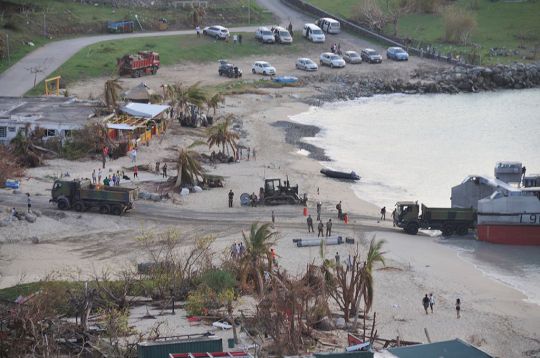
Luis (force 3 to 4) in 1995 caused a lot of damage in the West Indies and in particular in Guadeloupe with a 6 m rise in water levels, or hurricane Lenny (force 4) in 1999 which caused many victims.
In March 2018, the cost of the Irma crossing was estimated at ?3 billion for the islands of Saint-Martin and Saint-Barthélemy alone. However, since then, both islands have gone back up the slope and are once again opening up to tourism.
